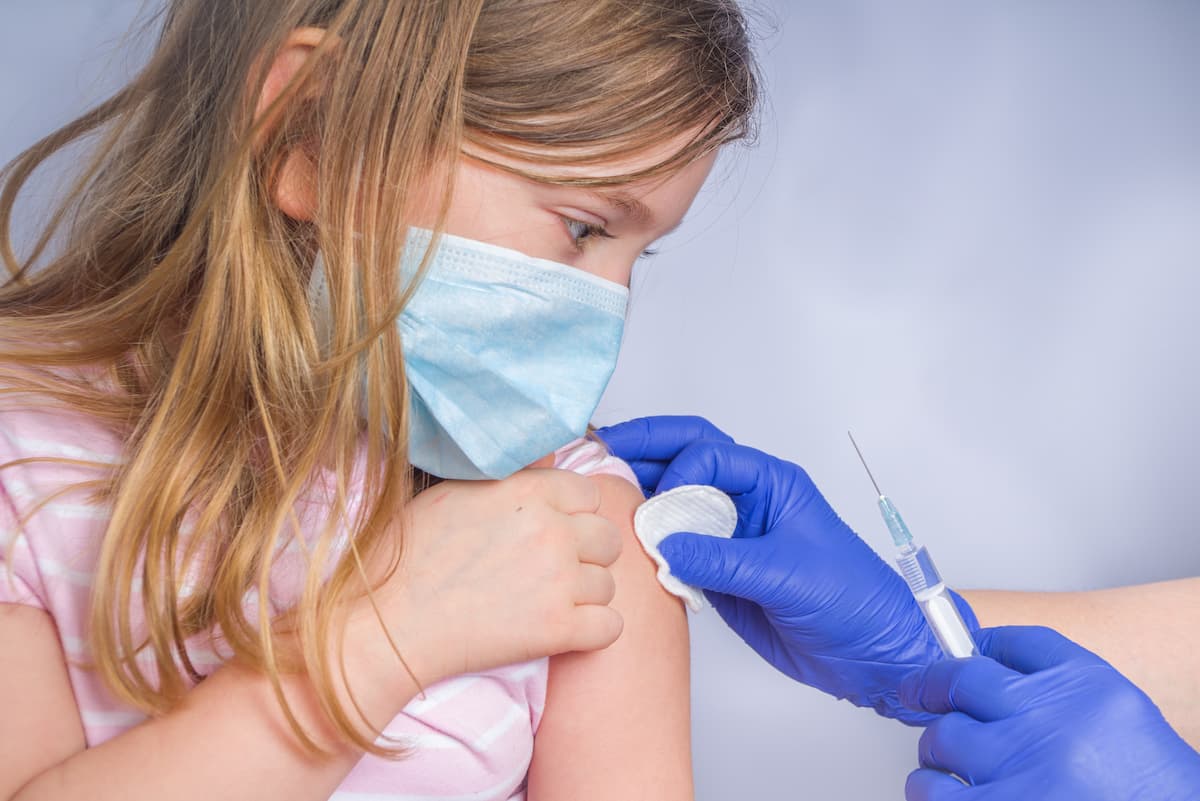News
Article
Updated BNT162b2 XBB COVID-19 Vaccine Protects Against Hospitalization in Children Aged 5 to 17
Author(s):
Study results show that the updated BNT162b2 XBB vaccine is effective in preventing hospitalizations or emergency department visits associated with COVID-19 complications.
The BNT162b2 XBB vaccine (Pfizer-BioNTech) targeting SARS-CoV-2, the virus that causes COVID-19, provided protection against COVID-19–associated hospitalizations and emergency department (ED) or urgent care visits in children aged 5 to 17 years during the 2023-2024 season.1
Pediatric COVID-19 vaccination provides children valuable protection. | Image Credit: © ricka_kinamoto | stock.adobe.com

The new data comes as vaccination fatigue has overtaken millions of adults in the United States, with this fatigue spreading to other age groups and impacting multiple infectious diseases. For example, CDC data found a major drop in vaccination coverage globally among kindergarteners for the 2023-2024 school year, with a portion of that hesitancy being attributed to COVID-19–related vaccine polarization.2
“Vaccination rates have declined in the past years, with data from earlier [in 2024] suggesting that not more than maybe one-third of patients or less are up to date with their COVID-19 vaccinations,” said David Ha, PharmD, BCIDP, manager of infectious diseases at Stanford Health Care, in a session at the National Community Pharmacists Association 2024 Annual Convention and Expo.3
COVID-19 vaccines are proven safe and effective; the CDC’s Advisory Committee on Immunization Practices recommends a single dose of an updated mRNA vaccine for anyone 5 years of age or older. Still, as the investigators of this current trial recount, data describing the effectiveness of updated COVID-19 vaccines in children remains limited. For this reason, in this trial, the study authors evaluated Pfizer-BioNTech’s BNT162b2 XBB vaccine during the 2023-2024 respiratory season among children in a large US health system.1,3
A test-negative case-control analysis was used to evaluate BNT162b2 XBB’s effectiveness against acute respiratory infection (ARI)-associated hospital admission and ED or urgent care visits among children ages 5 to 17 from October 2023 through April 2024 at Kaiser Permanente Southern California. In the full study cohort, 1125 children out of 15,233 ARI encounters (7.4%) received an XBB vaccine by the end of April 2024.1
Vaccine effectiveness against COVID-19 associated hospital admission or ED or urgent care visits was estimated to be 68% (95% CI, 11%-88%) among children aged 5 to 11, and 63% (95% CI, 20%-83%) among children aged 12 to 17 years, respectively. Overall, estimated vaccine effectiveness for all 5-to-17-year-olds was determined to be 65% (95% CI, 36%-81%), according to the study authors.1
Critically, no COVID-19–associated hospitalizations were observed among patients who received the BNT162b2 XBB vaccine, the investigators found. Furthermore, the vaccine’s estimated effectiveness was generally similar across all analyzed age groups, if results were restricted only to PCR test results or if antigen results were used to identify cases only.1
The investigators used this data in conjunction with the actual rate of COVID-19–associated hospitalizations in this age group to see how effective the vaccine could be in the real-world. From October 2023 to April 2024, the rate of COVID-19–associated hospitalizations in the US among 5-to-17-year-olds was 10.5 per 100,000. Given the 65% vaccine effectiveness rate garnered from the study, the investigators predict that the vaccine could have prevented 3700 hospitalizations and roughly 111,000 ED or urgent care visits during that respiratory season.1
Some limitations of the trial were discussed. Primarily, the study’s observational design brings multiple limitations, including the potential for unmeasured confounding, potential mischaracterization of prior infection or whether ARI encounters were genuinely COVID-19 related, and a lack of generalizability to other cohorts. Additionally, the low rate of children aged 5 to 17 years receiving the XBB vaccine—only 7.4%—indicates that more work is necessary to improve the uptake of the COVID-19 vaccine among pediatric patients.1
REFERENCES
1. Tartof SY, Frankland TB, Puzniak L, et al. BNT162b2 XBB vaccine for COVID-19 among children 5-17 years of age. JAMA Netw Open. 2024;7(12):e2449944. doi:10.1001/jamanetworkopen.2024.49944
2. Halpern L. New CDC data shows decrease in vaccine coverage among kindergarteners for 2023-2024 school year. Pharmacy Times. Published October 4, 2024. Accessed December 24, 2024. https://www.pharmacytimes.com/view/new-cdc-data-show-decrease-in-vaccine-coverage-among-kindergarteners-for-2023-2024-school-year
3. Antrim A. NCPA 2024: Latest updates on respiratory vaccines. Pharmacy Times. Published October 26, 2024. Accessed December 24, 2024. https://www.pharmacytimes.com/view/ncpa-2024-latest-updates-on-respiratory-vaccines
Newsletter
Stay informed on drug updates, treatment guidelines, and pharmacy practice trends—subscribe to Pharmacy Times for weekly clinical insights.





